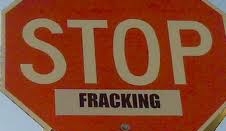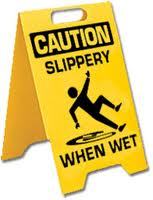As a Texas medical doctor and Fracking water contamination attorney, I want to pose this rhetorical question; What happens when the foxes are guarding the hen house? Consider that as you savor your morning coffee, which may be contaminated with benzene, from a contaminated water aquifer.

Oil and gas industry as well as government regulators have maintained for many decades that a drilling technique known as hydraulic fracturing, or fracking, that is used for natural gas wells has never contaminated underground drinking water. The fracking process, involves water and toxic chemicals being injected at high pressure into the ground to break up rocks and release the gas trapped there. This process according to industry officials, occurs thousands of feet below drinking-water aquifers and because of that distance, the drilling chemicals allegedly pose no risk.
According to ExxonMobil at a Congressional hearing on drilling…“There have been over a million wells hydraulically fractured …and there is not one, not one, reported case of a freshwater aquifer having ever been contaminated from hydraulic fracturing…”
But there is in fact a documented case, and the E.P.A. report suggests there may be more. Researchers, were unable to investigate many suspected cases because their details were sealed from the public when energy companies settled lawsuits with landowners. E.P.A. says this practice continues to prevent them from fully assessing the risks of certain types of gas drilling.
The American Petroleum Institute, dismissed the assertion that sealed settlements have hidden problems with gas drilling, and according to their data, they have found that drinking water contamination from fracking is highly improbable.
The documented E.P.A. case, and the report was published in 1987, and the contamination was discovered in 1984. The report concluded that hydraulic fracturing fluids or gel used by the Kaiser Exploration and Mining Company contaminated a well roughly 600 feet away on the property of James Parsons in Jackson County, W.Va., referring to it as “Mr. Parson’s water well.”
“When fracturing the Kaiser gas well on Mr. James Parson’s property, fractures were created allowing migration of fracture fluid from the gas well to Mr. Parson’s water well,” according to the agency’s summary of the case. “This fracture fluid, along with natural gas was present in Mr. Parson’s water, rendering it unusable.”
In their report, E.P.A. officials also wrote that Mr. Parsons’ case was highlighted as an “illustrative” example of the hazards created by this type of drilling, and that legal settlements and nondisclosure agreements prevented access to scientific documentation of other incidents. “This is typical practice, for instance, in Texas,” the report stated. “In some cases, the records of well-publicized damage incidents are almost entirely unavailable for review.”
Industry officials emphasize that all forms of drilling involve some degree of risk. The question, they say, is what represents an acceptable level. Once chemicals contaminate underground drinking-water sources, they are very difficult to remove, according to federal and industry studies.
A 2004 study by the E.P.A. agency concluded that hydraulic fracturing of one kind of natural gas well — coal-bed methane wells — posed “little or no threat” to underground drinking water supplies. The study was later criticized by some within the agency as being unscientific and unduly influenced by industry.
Instances of gas bubbling from fracked sites into nearby water wells have been extensively documented. The industry has also acknowledged that fracking liquids can end up in aquifers because of failures in the casing of wells, spills that occur above ground or through other factors.
Both types of contamination can render the water unusable. However, contamination from fracking fluids is widely considered more worrisome because the fluids can contain carcinogens like benzene.
The risk of abandoned wells serving as conduits for contamination is one that the E.P.A. is currently researching as part of its national study on fracking. Many states lack complete records with the number or location of these abandoned wells and they lack the resources to ensure that abandoned and active wells are inspected regularly.
A 1999 report by the Department of Energy said there were about 2.5 million abandoned oil and natural gas wells in the United States at the time.
Short answer, carbon based energy is not the answer, in this current heat wave that most of the country is withering under, think of the amount of solar energy that can be harvested?
Studies have shown that a solar array set up, in Nevada can supply all of the energy needs of the USA, for the next century.
Continue reading
 Dallas Fort Worth Injury Lawyer Blog
Dallas Fort Worth Injury Lawyer Blog


 CVS stores are one of the most popular stores in America, and its large volume of customers means that, inevitably, injuries occur on store premises.
CVS stores are one of the most popular stores in America, and its large volume of customers means that, inevitably, injuries occur on store premises.



